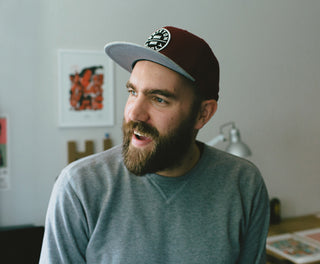I am going to share with you the stories of my friends here in London and around the world. I have decided to lay my posts out in a traditional story style, breaking it down in to the beginning, middle, and end. As you read into the lives of the people who are constantly challenging and inspiring me, you will see that life is like any true adventure, it doesn’t always go to plan, but you’ll have one heck of a trip.
Meet Timba Smits, creator of cool shit, collector of taxi light signs, Australian, and 80% beard. Currently, Creative Director of TCOLondon (Little white lies, Huck, and 71A Gallery).
Timba tells us how a competition he didn’t at first want to apply for pretty much changed his life.
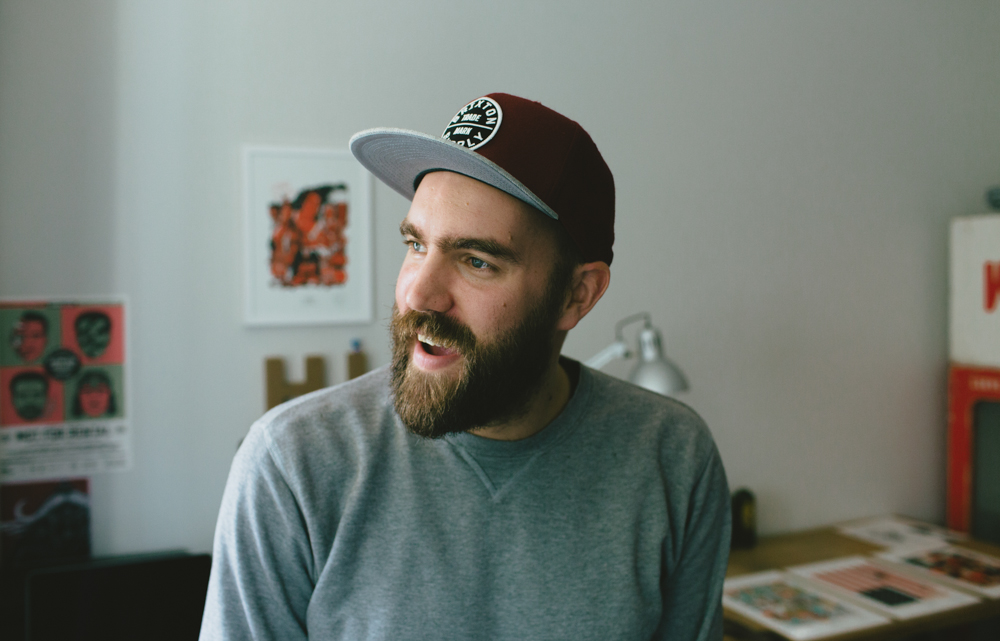
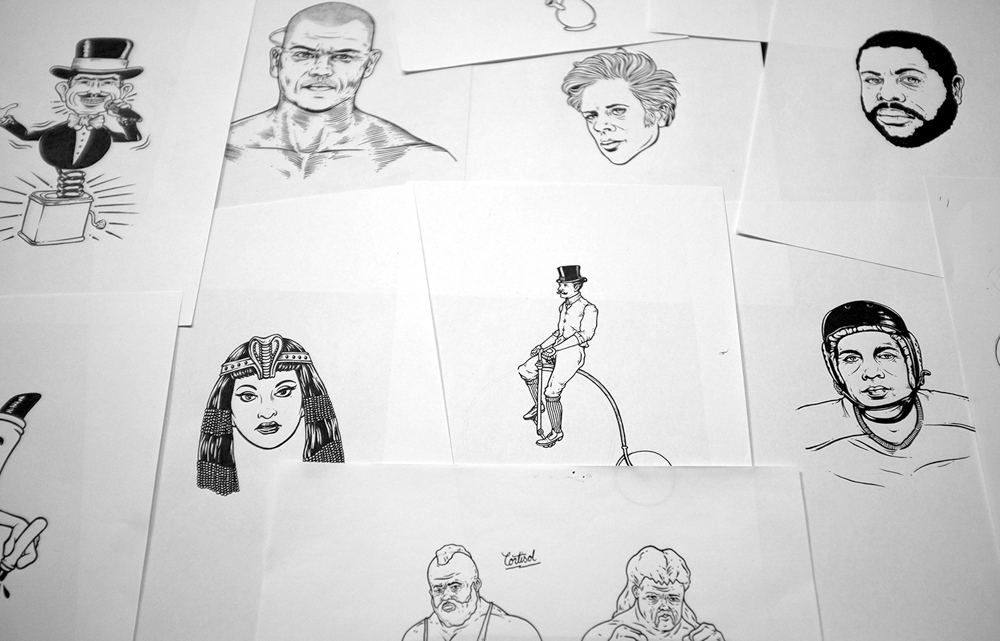
I first met Timba Smits over 4 years ago through a mutual friend. Ever since, he has been a source of inspiration, not just artistically but in the way he approaches challenges in his life. Just like how many of us were influenced from skateboarding at a young age, Timba carries the same ethics of if you fail, you get back up and keep going…
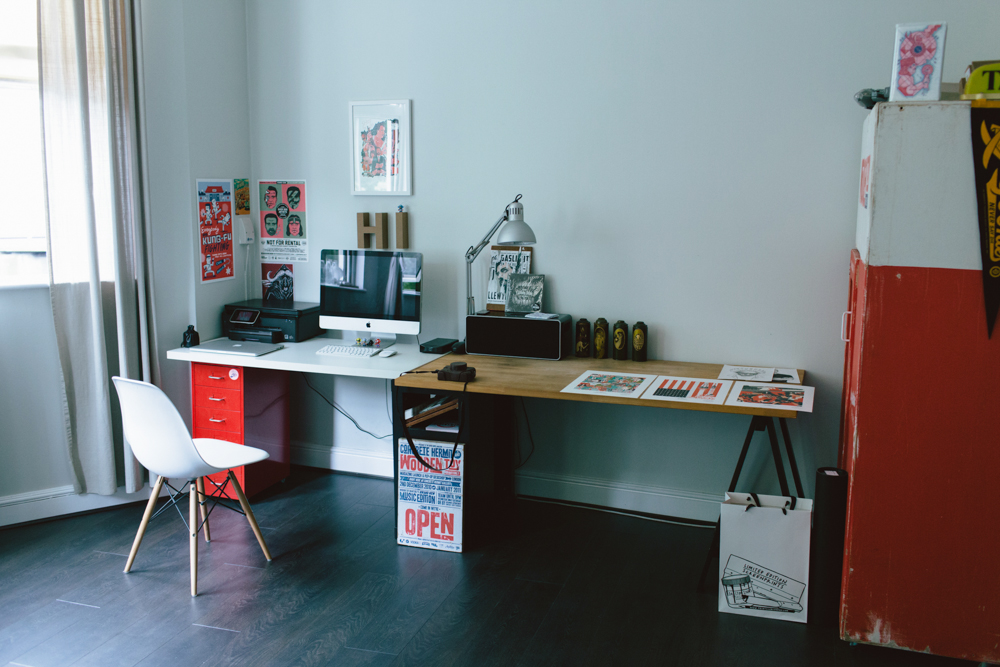
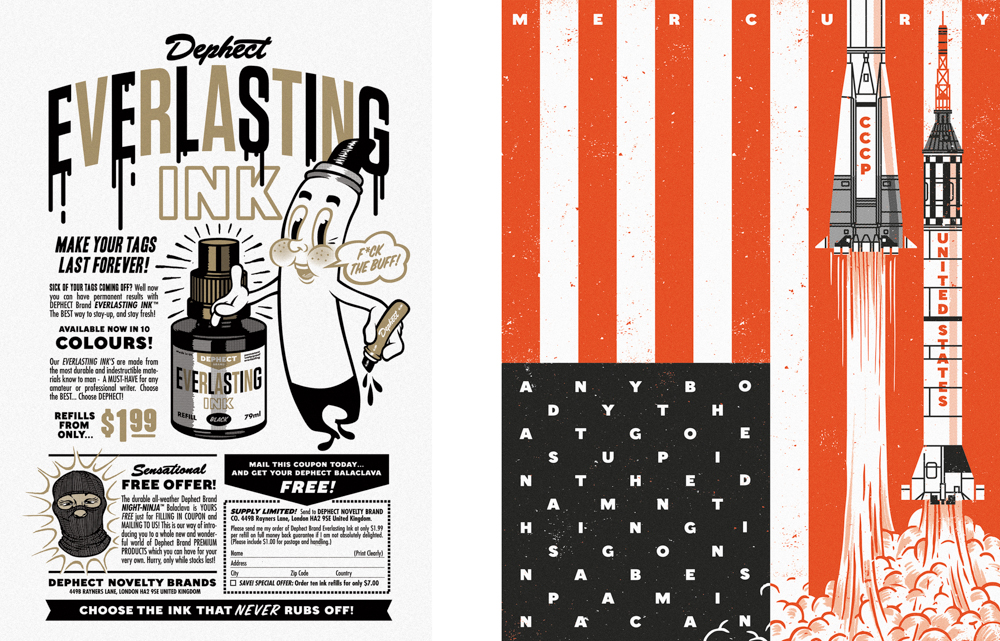
THE BEGINNING
BOYCE: Where do you call home?
TIMBA: Well, I grew up in a place called Mount Eliza, which is about an hour from Melbourne in Australia. A nice leafy suburb surrounded by mountain national parks, creeks, rivers, and ponds. So I was a very much an outdoorsy kind of a kid; didn’t really have too many friends. I spent a lot of time drawing at a young age, playing with Legos, G.I. Joes, and just kinda putting my wild imagination to play, which you know, I haven’t stopped with at the age of 35. I think it was when I won the grade six drawing competition, for Raphael the Ninja Turtle—the best Ninja Turtle. I thought, “Oh man, this is awesome!”
After finishing high school, I moved straight up to the city. My family was great. Growing up, I had the perfect childhood. I didn’t want to run away from home to get away from my family, I just wanted to get to the city so I could explore art. And it was soon after moving that I got to Melbourne that I discovered this whole new world out there. It was a couple years later that I opened up my first studio space called Timba Gallery, and exhibited friends’ and my own work. I worked out of there and fully lived out of there. [I] had a whole bunch of people come through, travelers from Denmark to Ireland. I did not travel out the country till I was 30, but I felt like I had been everywhere because of all these people coming through.
Closing the Timba Gallery after a few years, I was very young [and] didn’t really know what I was doing. In 2008, I opened another gallery, called Gorker Gallery, with some friends and ran that till I moved here in 2010. They were fun times. Till this day they are some of the best days of my life, killing it in Melbourne, but it got to the point where I wanted to grow my work, and the only way I could do that [was] to reach overseas.
So how did you get yourself to London?
My friend said, “You should enter this competition [The British Council Realise Your Dream Awards], you would kill it.” I replied, “I’m not the kinda competition sort of person,” and left it at that. Then the night before I thought, “Fuck it, what’s the harm,” and rushed my application before midnight on the deadline. A week later, [I] got a call saying I was shortlisted, and went through the whole process and managed to get to the final and just missed out that year. I then went on the following year and won!
What did you have to do?
You basically just need to explain/pitch to the British Council what your dream is, and my dream was to create more awareness for my magazine and be more internationally recognised for my art. I entered my dream and showed the criteria of proactively trying for that dream, then the British Council come in and give you that step up. So yeah, I won in 2009 and I was awarded a full paid scholarship to come to London.
Your First Move…
Straight away, I set up an exhibition called Lyrics and Type, which was an extension of one I previously did in Melbourne, which was hugely successful. What it was, was taking song lyrics and giving those to illustrators and getting them to interpret in to some sort of poster. It’s kind of common now, but it definitely had its place back then. The exhibition was picked up by a huge amount of media over here. Computer Arts Projects picked it up and really ran with it, giving us a huge feature in their magazine, then following that up by asking me to work on the cover for the next issue and it snowballed from there. It was like a blur for me that first year, and this is the stuff I was trying to attempt to do in Melbourne. That exhibition was a slingshot for me, for work and the magazine. After the Lyrics and Type exhibition, I thought to myself, “There’s no way I can go back now, this place is amazing.”
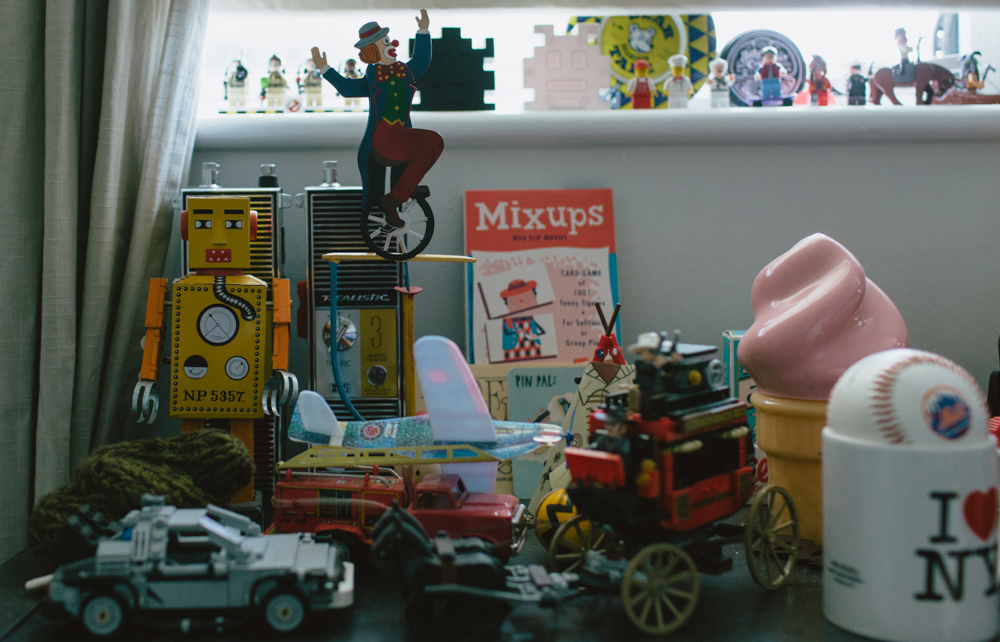
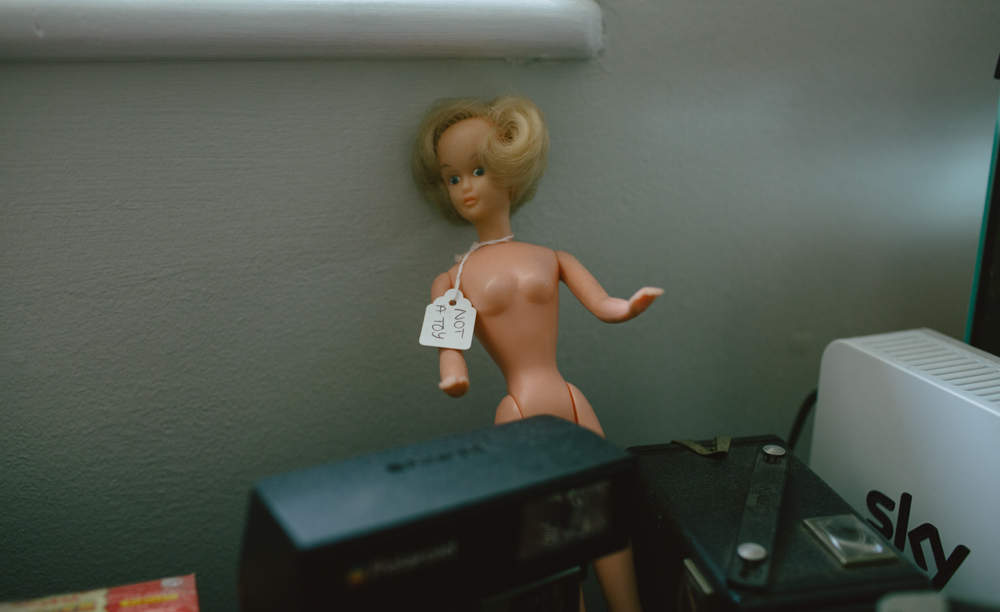
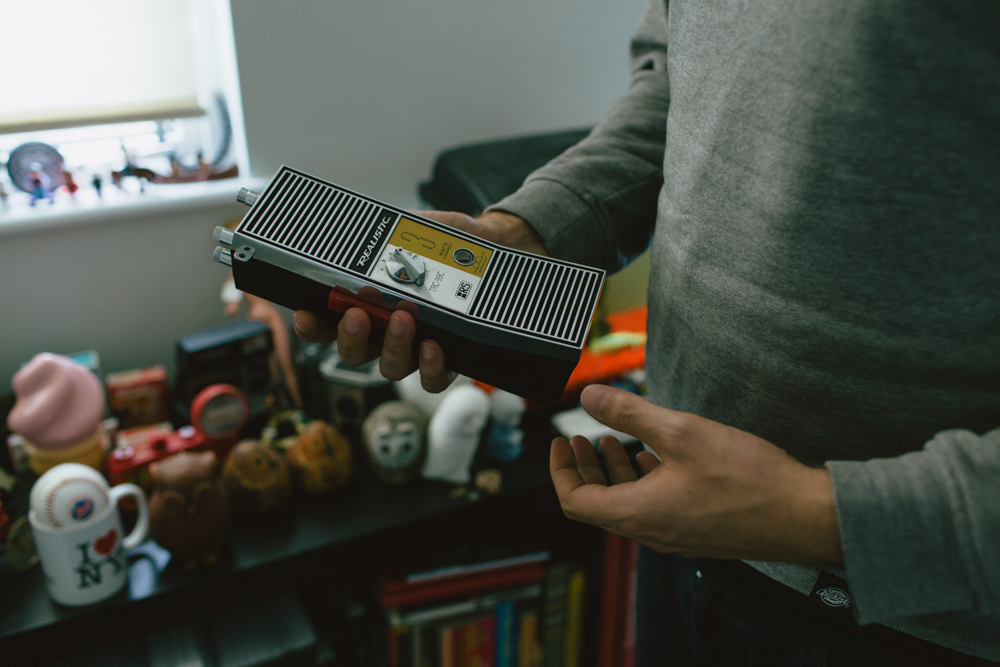
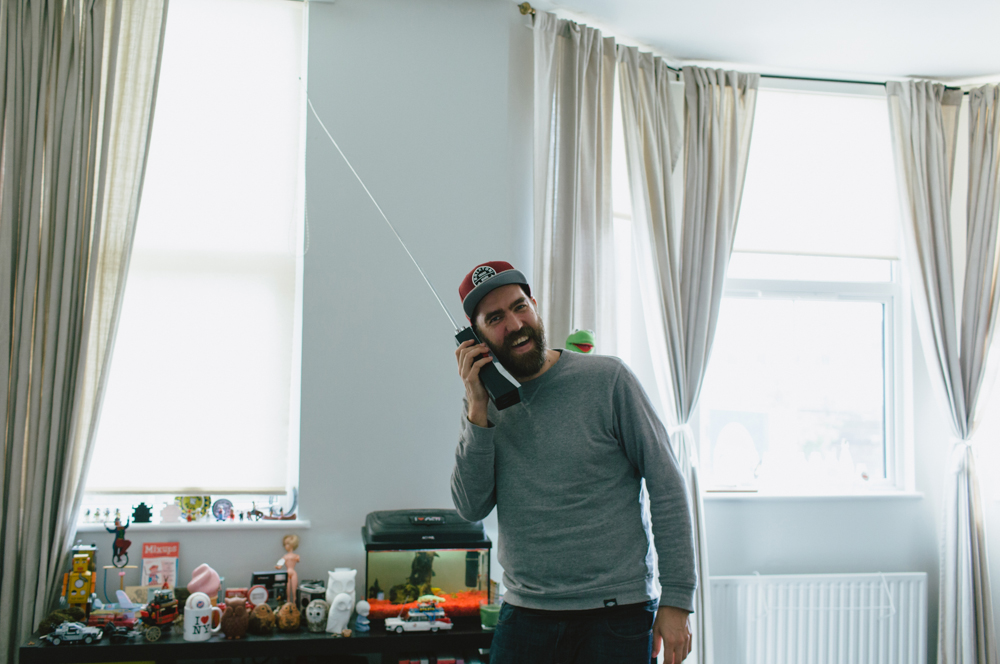
THE MIDDLE
What’s the history of your publication Wooden Toy Quarterly?
After finishing my course at Shillington College in Australia [in] 2005, a friend of my brother’s asked me if I was interested in teaming up to work on our own publication… We did our first issue by borrowing money off our parents, and combined we got our first 5,000 copies of Wooden Toy Quarterly printed in China. We didn’t know what to expect. We saw this hole in the market, Wooden Toy Quarterly’s form was a free skateboarding culture magazine. That was what we were into [at] the time and there was nothing like it. The first issue went freaking mental. Within a week they were all gone and it kicked up a bit of a storm—people all asking about it—it became like a cult overnight in Melbourne.
I started this in 2005 ending in 2011 unfortunately, due to an extreme event in my life.
We had a bit of scare in 2011 – Timba was defending a pregnant woman and a pensioner on a London bus, like a true super hero. When unfortunate circumstances led him to getting stabbed a number of times. Although this is pretty shocking, it’s not something I wanted to talk over with Timba in our hangout, as it’s not how I want you to remember him. His life is far more interesting and I am – like Timba – a true believer to focus on the positives.
Your Style:
I think I have a strong aesthetic to my work – anti-style in a way so I can jump. You know, I feel like I have 5+ styles, everything from like high realistic, to candy-coated vector work, but you can still see my aesthetic coming through and my playfulness.
I can [recognise] your work off a mile away.
That’s awesome that people can do that, even if it’s a new style I work on. It’s been like that since I first started. I will never forget when I had a show at my gallery when I was 20 and a journalist said, “When I walked in here and I realized all this work was done by one person, I was dumbfounded. It looks like it could be a group show.” Then she went on to say, “The amazing thing is not just that you’ve worked in all these styles, but each one is original – it’s not like it’s appropriated or copied from other artists. You found your true own identity and applied it to so many styles. Most people develop their styles their whole life time and you’ve just come out with like five.”
Sounds like you’re being greedy if I’m honest.
Ha! This is something that I really like about what I do – I can mix it up.
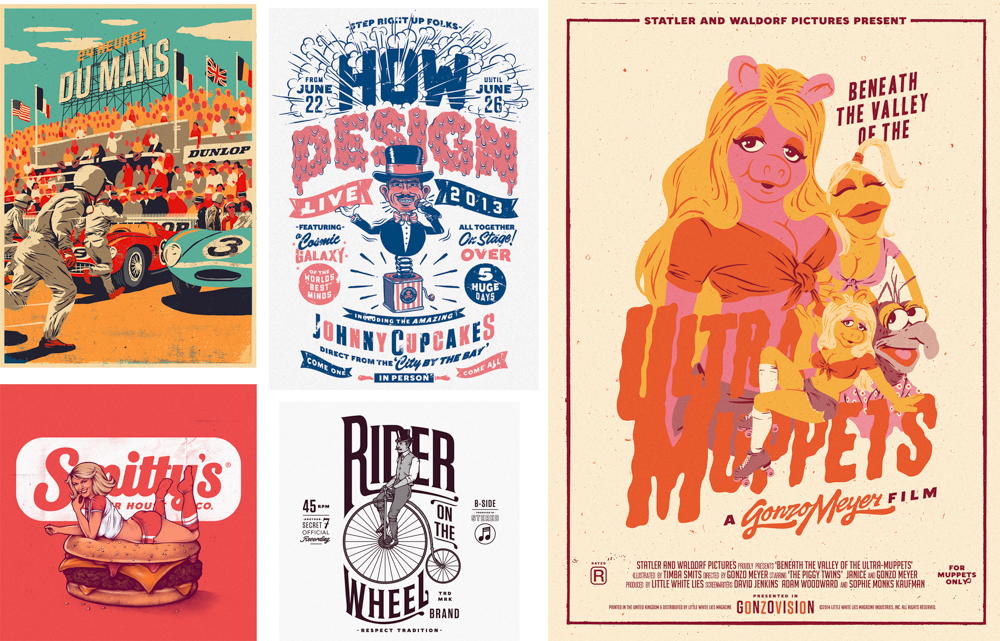
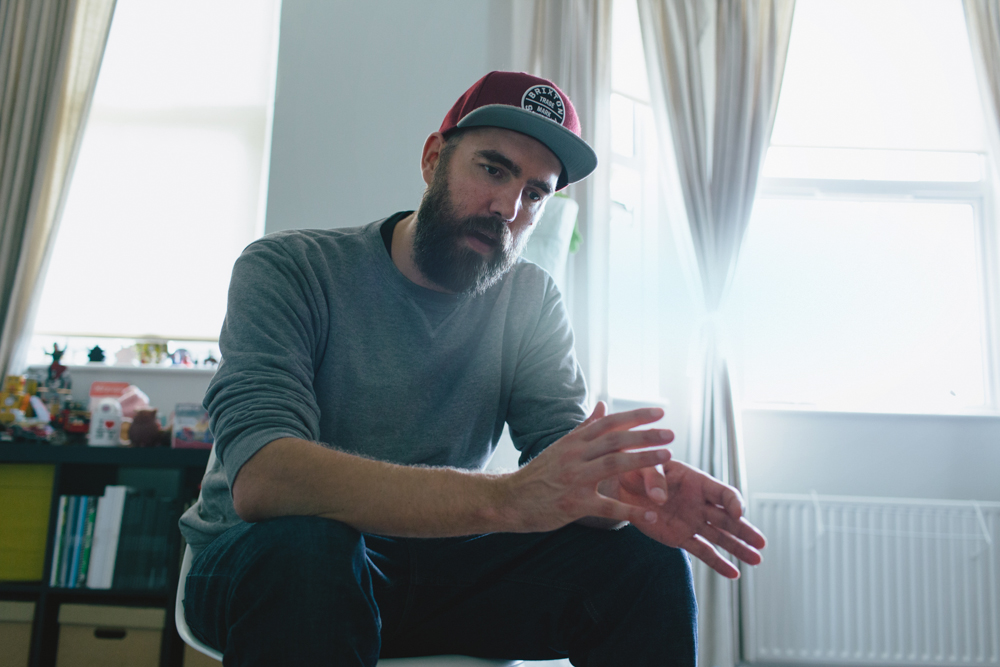
Your Current Role…
It’s a strange one coming from a freelance background. It’s the first full job I’ve had where I have bosses etc. The role is amazing.
It is the next chapter in my life. Little White Lies and Huck have been great, because I’m learning a lot about how to structure a magazine. Seriously, before I just did wooden toy, so looking back now, I’m like holy shit, it’s an organised mess. Now I’m learning about the user’s journey, much like the web.
Do you think this user-friendly idea has come from digital design?
Yes, I think everything’s a revolving door. There’s things from graphic design I’ve applied to my art and the other way ’round, which has given my work an edge. But definitely, I see principles from digital design being applied to print nowadays and both can learn a lot from each other. Definitely with print, I’m no longer thinking about shit. How can I make each page look like a poster you could rip out and put on your wall. Now I’m thinking, “How can it look great, but also keep the audience engaged and flow the stories through the magazine?” So in that respect, it’s an awesome chapter to be in right now, as it’s opening my mind and I’m learning a lot. It’s really awesome to learn a lot.
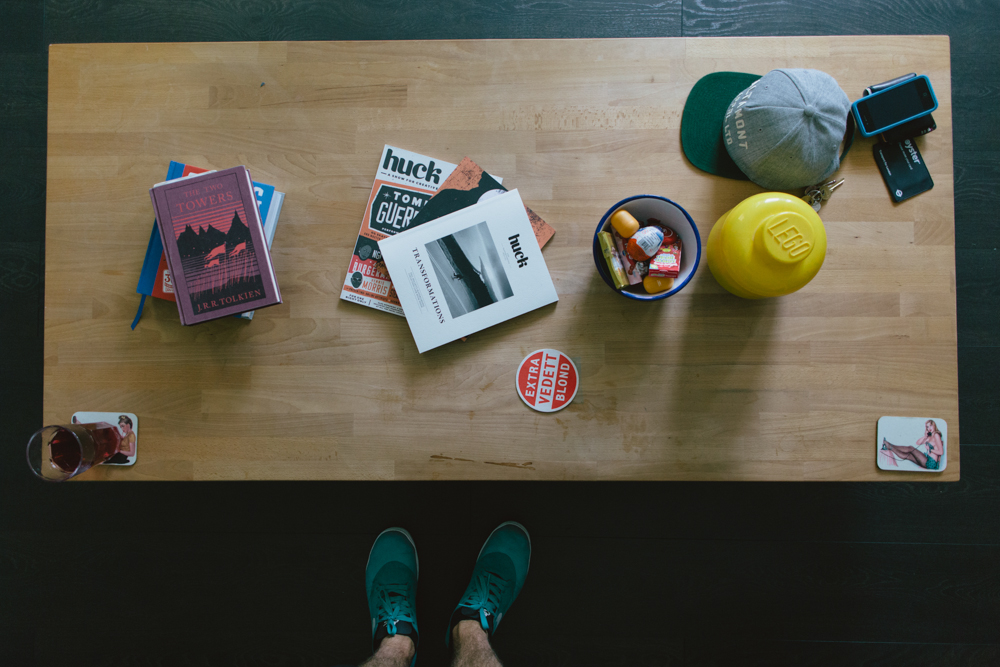
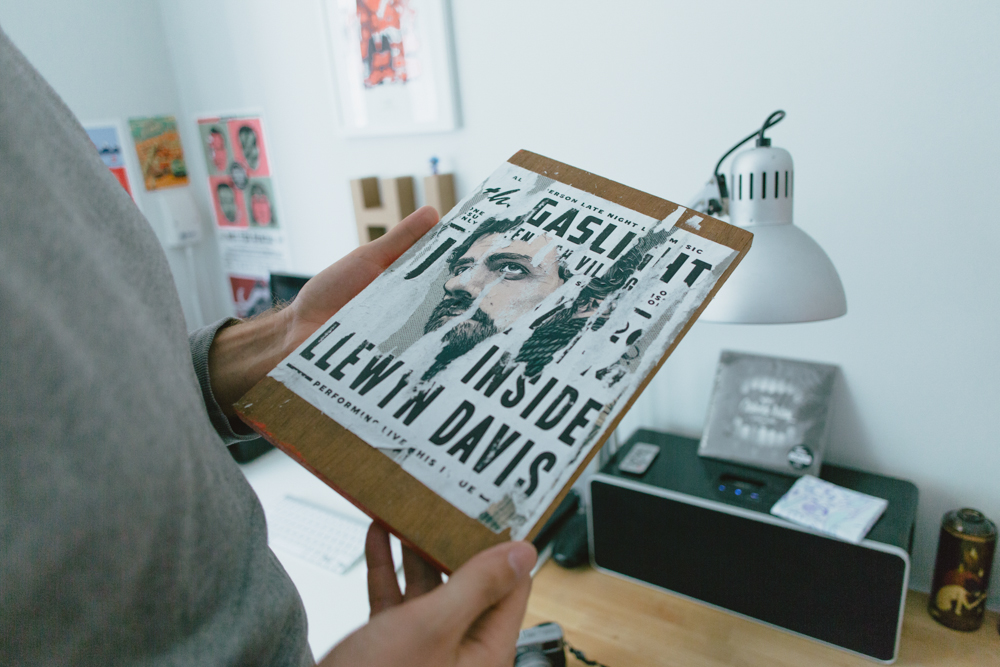
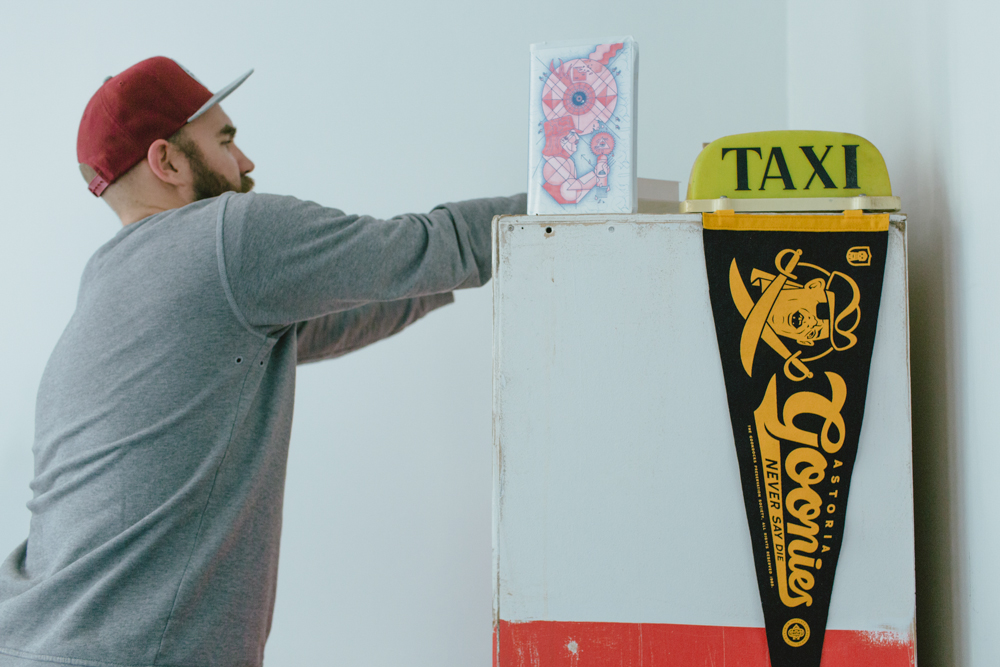
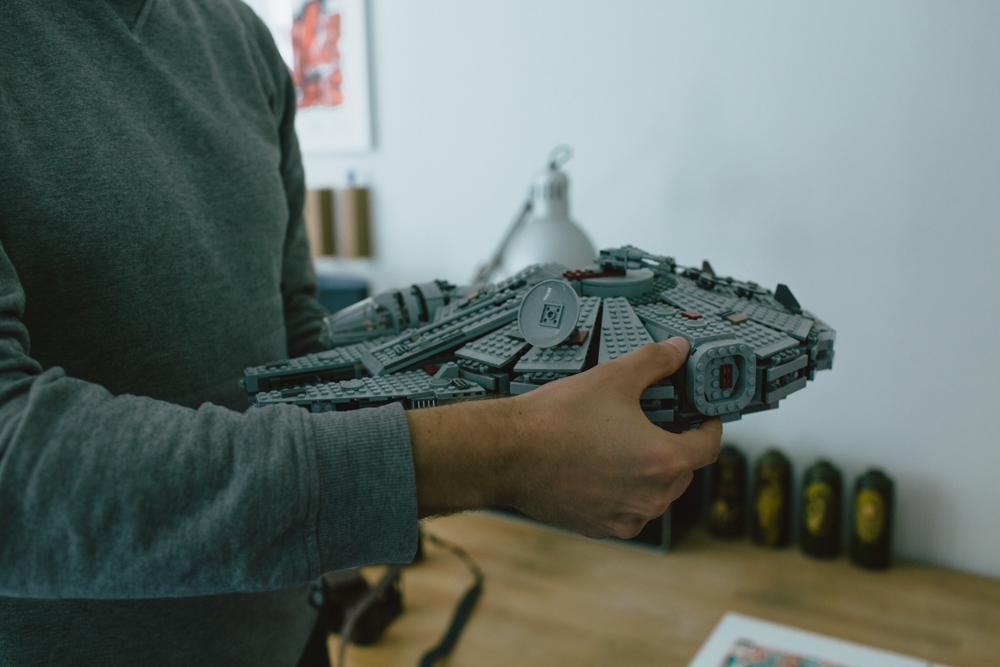
THE END
What do you want to do now?
I want to start making more personal work. I’m working on something on the side, which is going to be a digital project. An outlet where I can profile the people I meet, you know, like artists and show their art, people who show a spark, who I can give a little leg up because I really enjoy that. I really enjoy the art of giving other people opportunities, that’s what Wooden Toy Quarterly was about.
Who’s the first that comes to mind, in regards to this?
This amazing girl called Bec Winnel, the most incredible illustrator. And I still remember her coming in for work experience in the middle of winter in Melbourne. We told her to bring in her own heater because we didn’t have enough heaters, and to brace herself. The first day, Bec came in not knowing what to expect. The next day, Bec came into the studio wearing mittens, with a quilt, hot water bottle, beanie, everything… it’s hilarious thinking about it, but she came in everyday.
One day I saw her sketchbook and said, “Bec did you draw that?” And she was like, “Yeah yeah, it’s just like some of my silly doodles.” I said, “Bec, these are more than silly doodles, these are fucking incredible. Has anybody ever seen these?” She was like, “Ahh no, I wouldn’t know how to go about it.”
I said, “I need four pages filled in the next issue and if you wouldn’t mind I would like to do a little profile of you and publish these in the magazine.” She was very humble about it. We published them and from there, oh man, year upon year she just raised the bar, gaining a huge audience. She’s killing it man, you know she applies herself full-time to her art. I feel really happy that I played a role in that, being the first platform for her to jump off and then we exhibited her work in our Gorker Gallery. She had a sell out show there and I got to introduce her to some great people and yeah, boom, she’s done amazingly.
Where is she now?
She lives the dream in Australia.
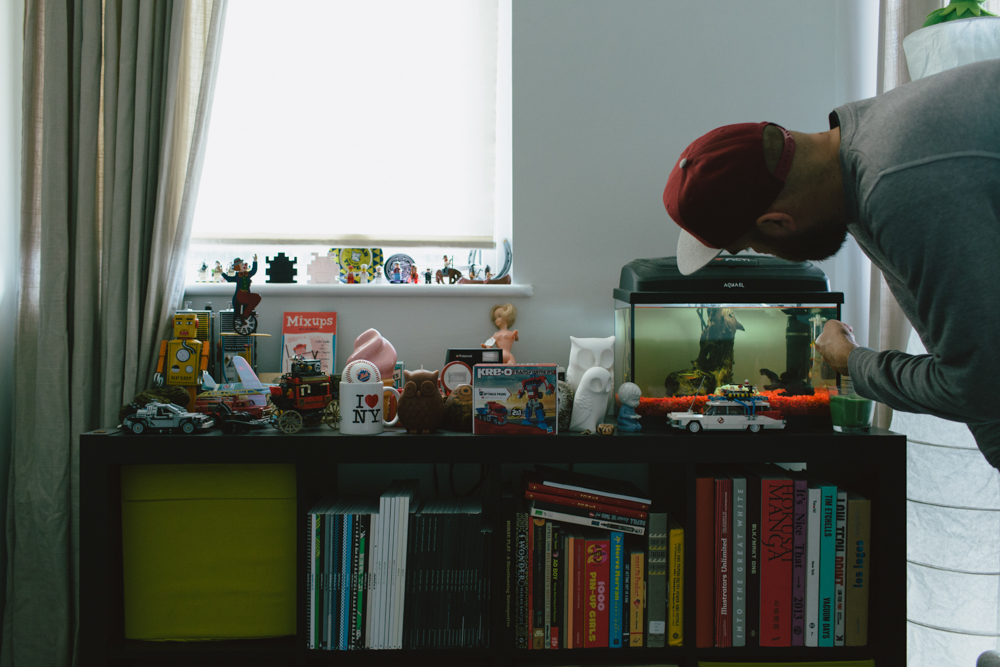
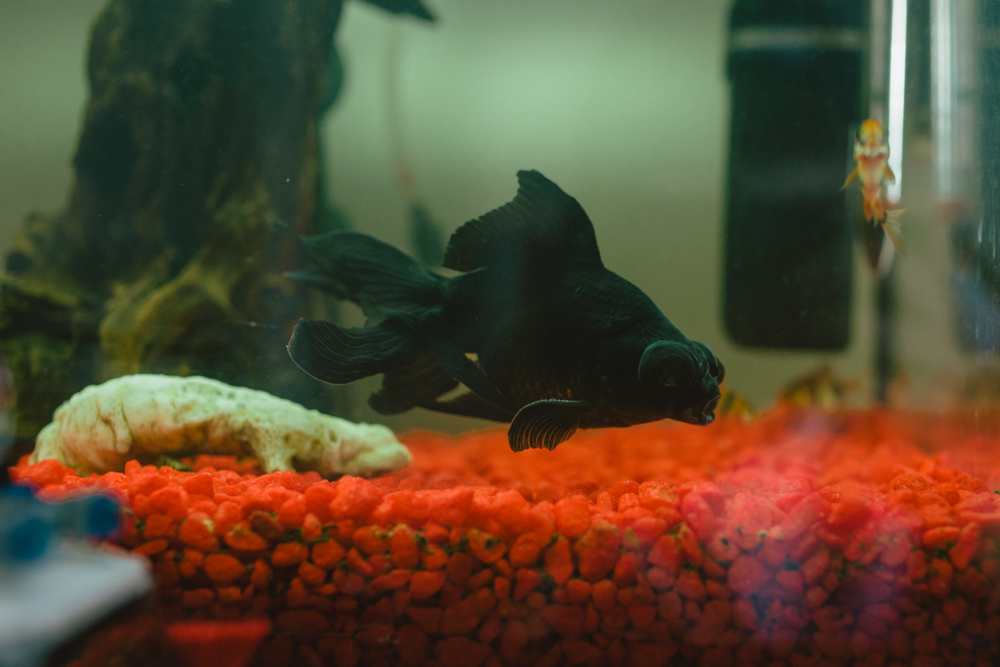
Favourite London treasure?
I absolutely love standing [in] the Turbine Hall of the Tate. Just being there, it’s the Tate Modern you know. Wanting to be an artist since such a young age and reading about all these artists, the Tate and all the art that’s been there and is there, is a real treasure to me.
A quote that has stuck with you...
Mr. Baran, my school art teacher gave me a quote that I do pass on to people still as I believe in it, “It takes time to do something good, it takes a lifetime to do something great.” It’s all about that process, of like, what’s your fucking rush? Slow down, do everything to your best.
Top Three Books you own…
HOKUSAI MANGA, Hervé Morvan, Ship Of Theseus.
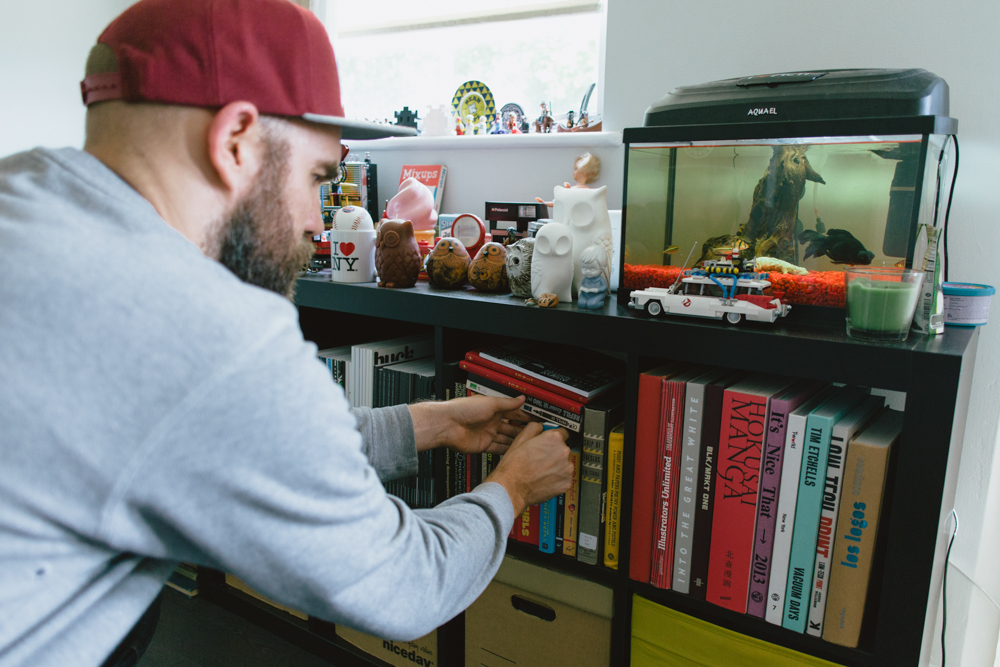
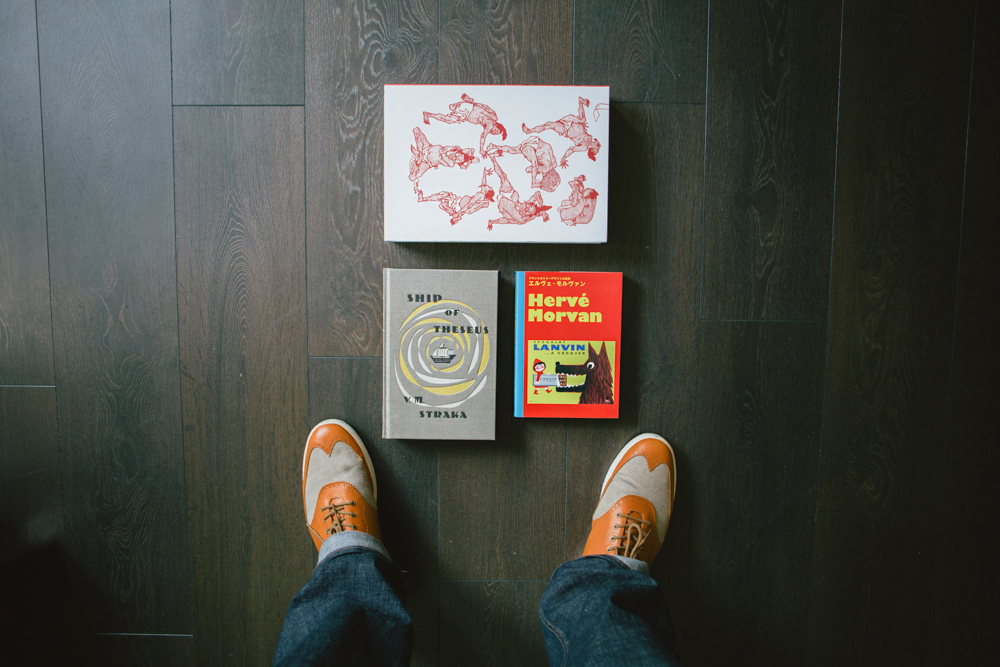
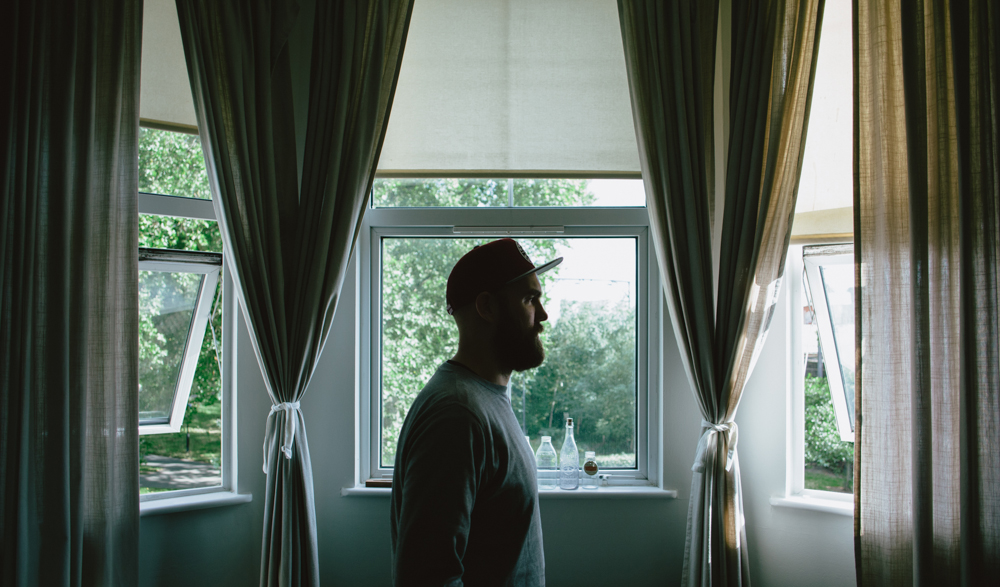
::
Thanks again to Timba for letting me share his story with you guys, hope you learnt something along the way.
Toodle Pip.

